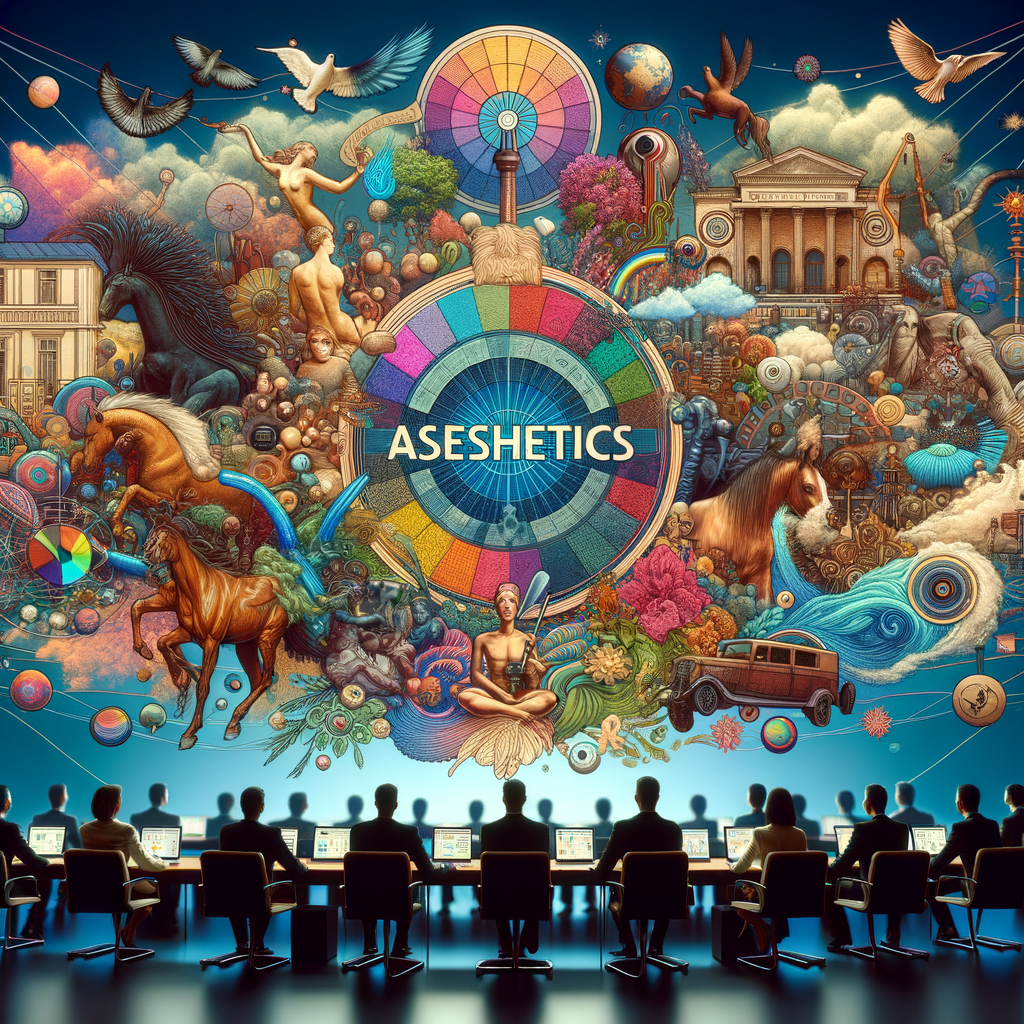When we talk about aesthetics, we’re delving into a fascinating world where visual schema come together to create a specific “mood.” This complex interplay of imagery and emotions is what makes aesthetics such a compelling subject. Whether it’s the romantic allure of Cottagecore or the techy vibes of Cyberpunk, aesthetics shape our perception and evoke feelings that transport us to different worlds. In this article, we’ll explore various types of aesthetics, ranging from Internet-born subcultures to historic visuals, and everything in between.
Aesthetics Originated from Internet Communities
In the age of social media, aesthetics are more influential than ever. Communities like Cottagecore and Dark Academia didn’t just pop up out of nowhere; they evolved online, resonating with people who share similar tastes and values. Let’s explore a few of these unique Internet-born aesthetics:
- Cottagecore: This aesthetic romanticizes rural life, emphasizing nature, simplicity, and a slower pace of life. Think floral dresses, cozy cottages, and homemade crafts.
- Dark Academia: A more scholarly and nostalgic aesthetic, Dark Academia revolves around classical literature, dark, moody color palettes, and vintage clothing.
National Cultures
While it’s essential to approach this category with sensitivity to avoid stereotyping, national cultures offer rich, diverse aesthetics. For instance:
- Americana: Characterized by motifs like stars and stripes, denim, and rustic decor, Americana evokes a sense of American patriotism and nostalgia.
- Traditional Polish: This aesthetic highlights folk art, vibrant colors, and intricate embroidery, reflecting Poland’s rich cultural heritage.
Genres of Fiction with Established Visual Tropes
Genres of fiction often come with their own set of visual markers. These tropes help establish the mood and setting, making the narrative more immersive. Here are a couple of examples:
- Cyberpunk: Known for its neon lights, futuristic technology, and dystopian settings, Cyberpunk creates a gritty, high-tech world.
- Gothic: Dark, mysterious, and often romantic, Gothic aesthetics feature elements like old castles, dramatic fashion, and eerie landscapes.
Holidays with Iconic Imagery and Colors
Certain holidays are instantly recognizable due to their iconic imagery and color schemes. These festive visuals play a significant role in setting the mood for celebrations:
- Christmas: Think red and green colors, twinkling lights, and cozy fireplaces. The imagery evokes warmth, joy, and family togetherness.
- Halloween: Dark and spooky, Halloween aesthetics include pumpkins, ghosts, and eerie decorations, creating a sense of excitement and mystery.
Locations with Expected Activities and Components
Some locations come with their own set of expected activities, components, and even types of people. These elements combine to create a distinct aesthetic:
- Fanfare: This aesthetic is all about the excitement and energy of fairs and festivals. Think bright lights, carnival rides, and joyful crowds.
- Urbancore: Emphasizing city life, Urbancore features skyscrapers, bustling streets, and a fast-paced lifestyle.
Music Genres with Consistent Visual Motifs
Music genres often extend beyond the auditory experience, influencing visual aesthetics as well. Cover art, music videos, and fashion all contribute to a genre’s unique look:
- City Pop: Originating from Japan in the 1980s, City Pop aesthetics include neon lights, urban landscapes, and a sense of retro-futurism.
- Emo: Known for its emotional depth, Emo aesthetics feature dark clothing, layered hairstyles, and expressive artwork.
Periods of History with Distinct Visuals
Historical periods often have distinct visuals that transport us back in time. These aesthetics are rich in detail and cultural significance:
- Victorian: Characterized by elaborate fashion, intricate architecture, and a sense of opulence, the Victorian era is a treasure trove of visual inspiration.
- Y2K: The turn of the millennium brought about a unique aesthetic featuring metallics, futuristic designs, and early digital technology.
Stereotypes
While potentially controversial, stereotypes also play a role in shaping aesthetics. They often exaggerate certain traits to create a recognizable visual schema:
- Brocore: This aesthetic is all about hyper-masculinity, featuring gym wear, sports gear, and a party-centric lifestyle.
- VSCO: A more recent internet trend, VSCO aesthetics focus on simplicity, featuring items like hydro flasks, oversized t-shirts, and scrunchies.
Subcultures that Share Music Genres and Fashion Styles
Subcultures often revolve around specific music genres and fashion styles, creating a cohesive and identifiable aesthetic:
- Raver: Known for vibrant colors, eclectic fashion, and a love for electronic music, Raver aesthetics are all about freedom and expression.
- Skinheads: With a distinct look that includes shaved heads, boots, and braces, Skinhead aesthetics reflect a complex cultural history.
The 2014 Tumblr Aesthetic
To illustrate the rich tapestry of aesthetics, let’s take a deeper dive into the 2014 Tumblr aesthetic. This particular aesthetic was a melting pot of various influences, creating a unique, nostalgic vibe that still resonates today.
- Fashion: The 2014 Tumblr aesthetic was characterized by a mix of grunge and indie styles. Think oversized flannels, ripped jeans, and vintage band tees.
- Imagery: Black and white photos, Polaroids, and grainy film pictures were all the rage. These visuals created a moody, nostalgic atmosphere.
- Music: Indie rock bands like Arctic Monkeys and The 1975 were staples of the 2014 Tumblr playlists, their music videos often reflected the aesthetic’s moody tones.
In essence, aesthetics are more than just a collection of visual elements; they are mood creators, transporting us to different times, places, and emotional states. Whether you’re drawn to the simplicity of Cottagecore, the scholarly vibes of Dark Academia, or the nostalgic allure of the 2014 Tumblr aesthetic, there’s an aesthetic out there that speaks to you. So go ahead, explore these visual schema, and find the mood that resonates with your soul.

Leave a Reply